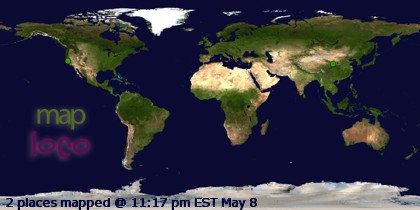 There's a species of cactus in the Sonoran Desert that I had no idea existed before I lived here. I dismissed stories of their insidiousness as exaggerated myth, until last Saturday, when I had the stupidity to hike through a steep incline of a mountain's southern face that was densely covered in them. They resemble something that Dr. Seuss would have put in his books, but would really be more at home as part of Dante's horticulture around the City of Dis on the 6th circle of Hell, or on the shores of the boiling blood of the 7th level. The Jumping Cholla, Opuntia bigelovii, aka the evil misnomer "Teddy Bear Cholla".
There's a species of cactus in the Sonoran Desert that I had no idea existed before I lived here. I dismissed stories of their insidiousness as exaggerated myth, until last Saturday, when I had the stupidity to hike through a steep incline of a mountain's southern face that was densely covered in them. They resemble something that Dr. Seuss would have put in his books, but would really be more at home as part of Dante's horticulture around the City of Dis on the 6th circle of Hell, or on the shores of the boiling blood of the 7th level. The Jumping Cholla, Opuntia bigelovii, aka the evil misnomer "Teddy Bear Cholla".These guys grow from about 1 to about 6 feet tall, and thrive on very rocky soil, even "no soil", growing up between refrigerator sized rocks sometimes. From far away, they are "cute" and give off a 'glow' when lit in bright sunlight. They don't really "jump" off the main plant, but they readily, easily, stick to you if you brush against them even the slightest amount. They drop seed pods (around the base of the one pictured above), that are spiny-er than sea urchins, and once they stick into human flesh, has a sort of barbed-anti-withdrawal mechanism. Wearing gloves insures the spines will stick into, and often through, the gloves when you try to withdraw them from another part of your body.
I accidentally kicked one of the seed pods that was laying along a marked trail that a horse likely had knocked lose previously, or the wind had blown there. I kicked it with my trailing right foot, into the Achilles tendon of my advanced left foot. Ow. On level ground, it was an exercise to extract. Towards the middle of my extended hiking day, I faced a slope covered in these cute little guys.

I wrongly rationalized, that I could circumvent these clusters, sticking to the barren ground around the Saguaros. See, the Saguaros are the dominant cactus species with roots that kill most other smaller plants close to them, capturing all the available water before the other plants can. A mature Saguaro (over 50 years old) will leave a radius of plant corpses around it for 20 or so feet. So I foolishly ascended the slope, thinking "it won't be so bad".
Once I got near the first summit, I looked back at the cholla mine field I had just negotiated. The picture below was taken at about a 60 degree downward slope. It was just a wee bit stressful to ascend a large rock formation, get to the top, and see a 5 foot cholla above you, it's dropped seed pods millimeters from your gloved hand. Ah the dumb things white people do!

Now, one thing to keep in mind, is that the Jumping Cholla seed pod is hardy, until stepped on, or once it punctures your skin. Then it transforms into something more annoying than the droid drop fighters from Star Wars Episode III. Breaking apart, in little spider shapes, spines remaining in leather or flesh, they're really not any fun.
To give you an idea of just how many of these self scattering, readily puncturing seed pods a mature Opuntia bigelovii can drop, one needs to examine a jumping cholla corpse after its life-cycle is complete. The photo below shows a pile of spiny seed pods, in a heap. I took it on my stagger back to the parking lot, energy reserves (and water and electrolytes) depleted as the sun was setting. I did take three 16 oz bottles, but the day long hiked drained those by 430pm. Earlier in the day, I'd see MUCH larger piles than this 2 foot high, 6 foot diameter one.

On level ground, so what, walk around such a pile. But when scaling large boulders on a steep incline, that are resting on friable, gravelly, somewhat unstable soil, and pulling yourself up to find such a pile-of-pain close to your fingers, face, or other body parts, it instills a very healthy respect for the plant.
In the future, when faced with a slope covered with jumping cholla, go around, not through. It's not worth it.
Luckily Jumping Cholla need vast amounts of sunlight to thrive, and tend to not grow very well on northern facing slopes in this hemisphere, where ocotillos, tall Saguaros, and palo verdae do much better. Descending the northern slope was alot easier than ascending the southern.

good grief, it's weaponized
ReplyDeleteOf all the effective weaponization in the Sonoran desert, I think the Jumping Cholla is the most vicious of the plants. Ocotillos are entirely thorns, but they keep to themselves. Saguaros and most other cacti species are spiny sure, but they don't "shed", and when they die, they are empty skeletons, harmless.
ReplyDeleteHearing of others being stuck gives a person pause. One thinks "oh, just stay away from them, and you're fine" as I used to. However, once you're punctured by them yourself, even after being cautious and cognizant, a Whole New Healthy Respect is instilled.
I know photographers, cyclists, hikers, and campers who have all had tremendously unpleasant run-ins with these cholla. I hope to never repeat my kicking mistake again!